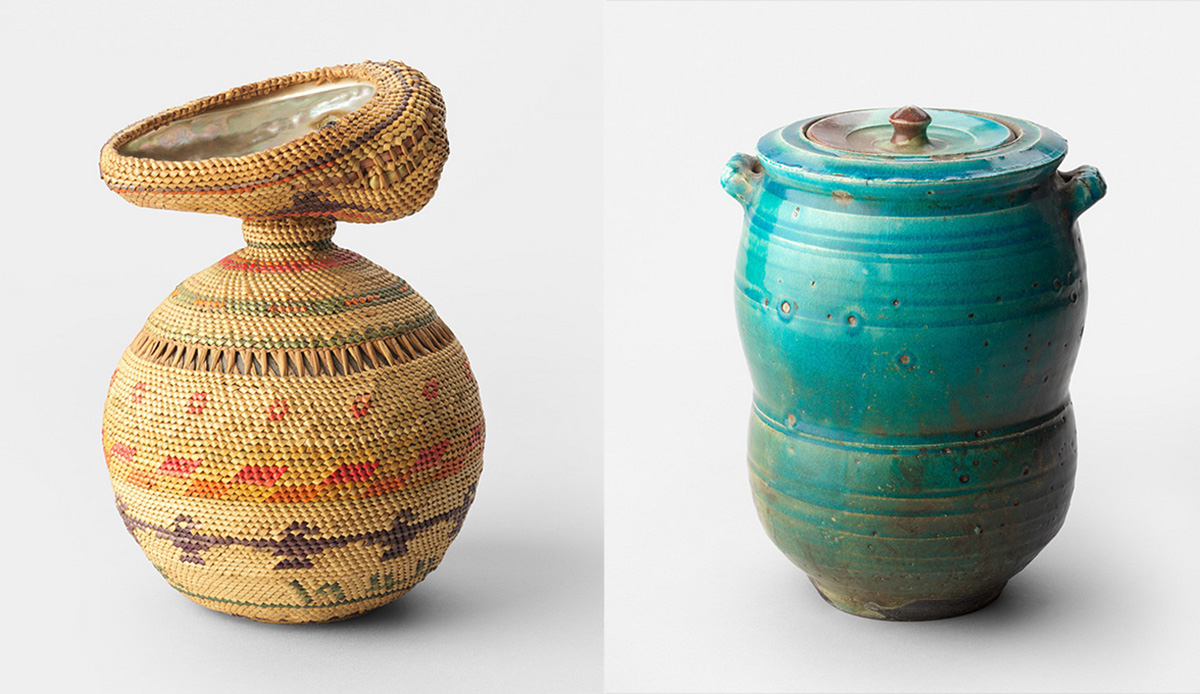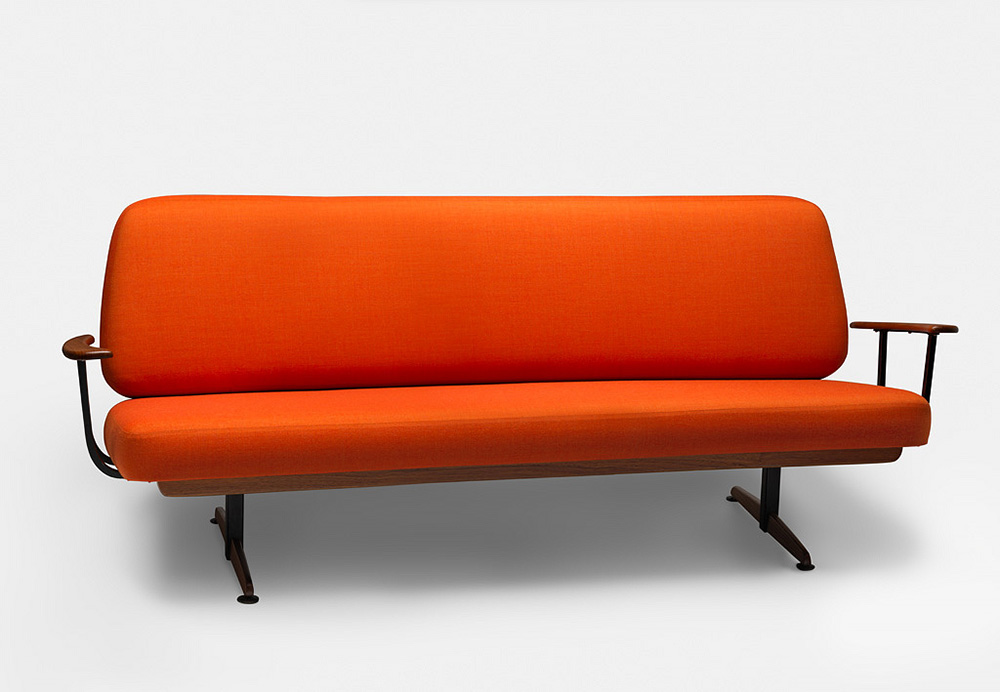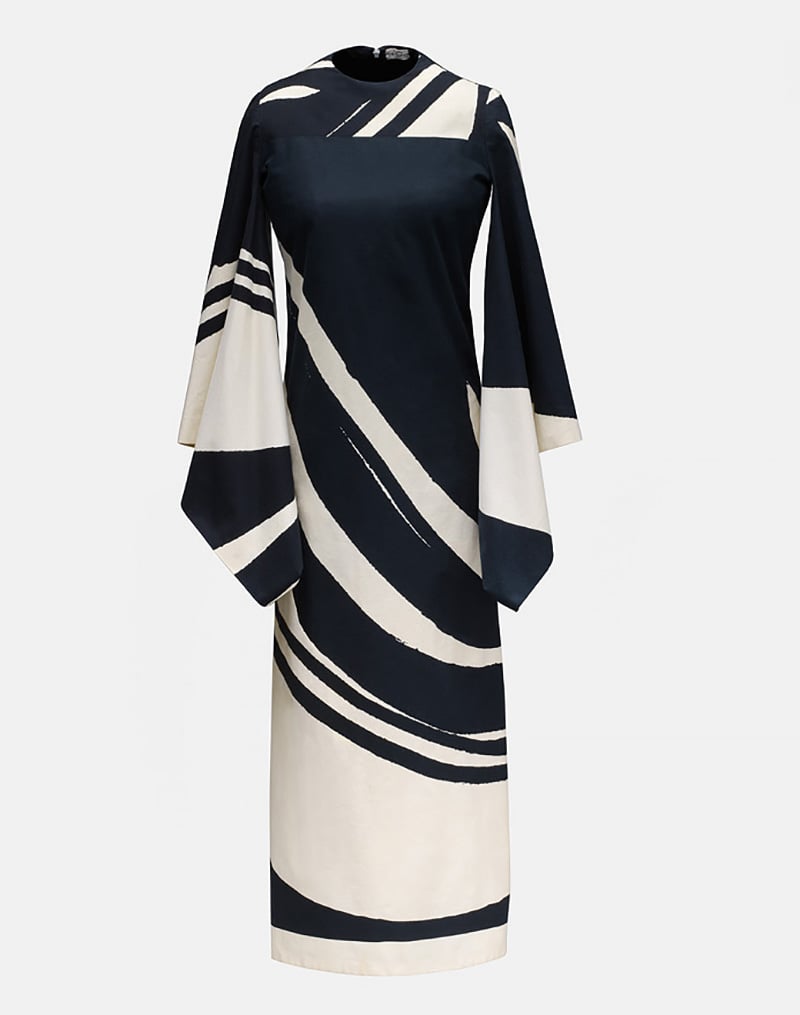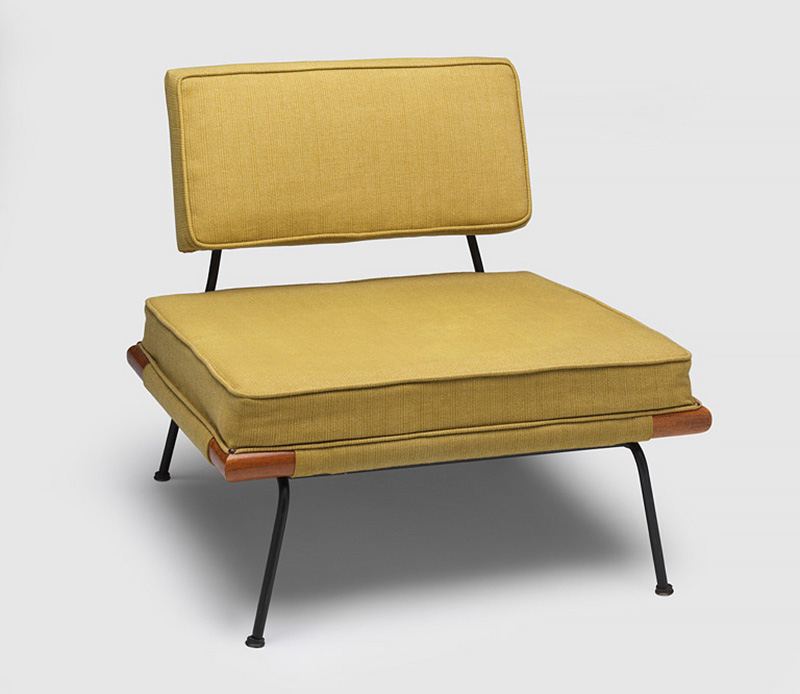If you live on the West Coast, you’re probably familiar with our modern architecture — its special attention to light, climate and green surroundings. Beloved architect Arthur Erickson is its poster child, responsible for examples like UBC’s Museum of Anthropology and the Simon Fraser University campus on Burnaby Mountain.
But there’s usually less focus on the crafted goods of the same period, a time when immigrants brought their influences to these shores and settlers cast a spotlight on the design traditions that Indigenous peoples established long before contact.
The Vancouver Art Gallery’s Modern in the Making: Post-War Craft and Design in British Columbia tells the story of mid-century design in B.C., when the middle and upper classes settled into post-war domestic life and wanted to buy stuff.
The 300 works on display include everything from couches to clothes and jewelry to textiles. There are cufflinks by Bill Reid, Raku vases by Wayne Ngan and a chair made of the same plywood used to make warplanes. Think Mad Men with a Pacific touch. You might see a nod to Bauhaus, or perhaps Nuu-chah-nulth influences.
As two Tyee writers who share an avid interest in all things design — from high fashion to Value Village scores — the show’s ethos was like a ringing dinner bell. In short, we came a’running.
On the surface, the VAG collection is a swirl of colour and form. But there are knottier, more complex connections, even in the most mundane objects.

But what makes design particularly Canadian, and even more specifically, West Coast Canadian?
In the late-1910s, the federal government, on the hunt for design distinction, turned to the cultures of the land’s original inhabitants, encouraging scholars and artists to develop glossaries of Indigenous motifs in order to raise interest in a Canadian aesthetic. But colonization through the appropriation of design posed some major issues.
One item on display that exemplifies the tensions of contact — appreciation vs. appropriation — is an 82-year-old Cowichan sweater. It looks almost new but was made long before the likes of Pendleton, Ralph Lauren and even Vancouver-based Aritzia made their own spin-offs.
The sweater has roots in both Indigenous and Scottish weaving traditions. Coast Salish peoples, including the Cowichan, had long weaved before Europeans introduced sheep to Vancouver Island in the 1850s. But settlers such as the Sisters of St. Ann missionaries taught many Cowichan women the new skill of knitting, making European items like socks, mitts and sweaters.
Cowichan knitters began to use the Fair Isle patterning technique, likely taught by a settler woman originally from the Shetland Islands, to create hand-knit sweaters with hand-spun yarn. The result was a unique sweater that is heavier and bulkier than Scottish garments, perfect for the coast and born out of a cross-pollination of cultures.
By the 1950s, Cowichan sweaters had become such an iconic Canadian item that many non-Indigenous designers began producing their own. You might remember the scandal before the 2010 Vancouver Winter Olympics when the Bay, after rejecting a Cowichan Tribes proposal to produce sweaters for its Olympic line, began producing its own Cowichan “inspired” sweater. In the end, they reached a compromise: the Cowichan Tribes would be allowed to sell their trademarked sweaters alongside the copycats.
Some Indigenous creative workers managed to fight off appropriation and hold their own. There are buttons on display by Nellie Jacobson of the Nuu-chah-nulth, a bracelet by Robert Davidson of the Haida and weaving by the Salish Weavers Guild.
But the sweater is a good example of the nature of design itself, a constant filtering down from singular objects to mass-produced creations.
In the words of Arthur Erickson: “Honesty was the rallying cry of early modernists, and they reduced everything to absolute essentials.”
Some of the exhibit’s objects, although created more than 75 years ago, still carry the bracing blast of the contemporary, as brisk and sharp as marine air. This is West Coast design at its best — clean, spare and, as Erickson says, pared away so that only the most necessary things remain: colour, form and line, whether it’s a dining room table or a fold-away couch in a shade of tomato-soup red.

A few years ago, the DOXA Documentary Film Festival in Vancouver screened a film called Coast Modern. It was a relatively straightforward affair that glided elegantly around various architectural masterpieces in Vancouver, as well as other buildings in Portland, San Francisco and Seattle.
Sure, it was little on the house porn side, but there was no denying the outpouring of unrestrained lust for the sleek interiors and lush gardens on display. The first two screenings sold out instantly, so the festival added more, which also sold out. It was a useful lesson in just how much Vancouverites love them some high modernism.
There are many films dedicated to modernist architectural wonders. There are fewer cinematic takes, however, on humbler, more prosaic items like lamps, couches and ashtrays — what the VAG’s interim director Daina Augaitis describes as: “functional, domestic objects that could complement the new West Coast modern architectural style.”
These objects may be functional, but they’re as lust-inspiring as the houses they were designed to fit into, perhaps more so because of their intimate and often deeply whimsical nature. Many are highly covetable. If it weren’t for the threat of jail time, a person might be tempted to grab a vase and make for the door.
Some of the most delectable objects are the smallest — pendants from Doris Shadbolt, a greenish hefty ashtray that could double as a murder weapon in a Hitchcock film. Good design can reduce even the strongest of humans to a seething bundle of illicit desires. The most passionate of these humans are the collectors.
Modern in the Making, with its slight play on words, is drawn from a few different collections, most notably from guest curator Alan Collier’s treasure trove of furniture which provides the show with most of the larger pieces. As a video component of the show explains, collectors are deeply territorial creatures. One of the most dedicated of these is Ivan Sayers, whose examples of historical fashions grace the show with slim wool suits and awe-inspiring evening gowns.

Sayers began to amass his collection when he was young and virtually penniless. Yard sales, thrift stores and other repositories of potential diamonds in the dust necessitated the development of a hunter’s instinct, a keenness that is evident still in his video interview.
If some of the articles on display look like something you’d find on a particularly good day at the Salvation Army, you’re not wrong. The VAG’s interim director Augaitis and guest curator Collier spent years tracking down objects that had ended up in secondhand stores or in someone’s basement.
As they traced the provenance of different objects, an earlier era in Vancouver came into view, both distant and yet thrilling tangible, alive in the different objects that people used, wore and sat on.
Some stand out.
Like Rose Marie Reid’s bathing suit, with its primary colours and sleek construction, which still packs a jaunty punch à la Wonder Woman, or a black-and-white gown from designer Mary Chang, with its echoes of Marimekko-type prints.
Lounge chairs residing next to boxy desks and entertainment centres, reminding one of the cool stuff that you might see in a documentary about design superstars the Eames.
The Airfoam Lounge Chair created in 1951 by Earle A. Morrison and Robin Bush of Earle A. Morrison Ltd. is a particular beauty. But as much as you may want to park your butt on it, refrain. It’s not for touching and sitting on; only your gaze is allowed to make its way across the Airfoam’s golden nubbly exterior.
The shapes of the chairs, vases and couches are one thing, but then there are the colours — mustard yellows, teal blue, acidic green, and a peculiar shade of orange that never made it beyond 1975.
Why do humans have such an interest in the aesthetic of earlier eras? Fantasy, projection, nostalgia? There’s also something about objects that people touched, loved and kept for decades; some lingering quality, like a faded fragrance. But why do some things stand the test of time, while others simply look more ridiculous with each passing year? Well, that’s the ineffable mystery of design. Best not to dissect too deeply, just let the cool beauty ravish your senses.
Whether your fetish is raku pots, Haida jewelry or chairs, so many chairs, there is something for your delectation here. The exhibit is open until Jan. 3, which means come rainy fall you’ll have a place to hide and admire the comfy couches. Just don’t sit on them. Or drool on them either. ![]()
Read more: Art

















Tyee Commenting Guidelines
Comments that violate guidelines risk being deleted, and violations may result in a temporary or permanent user ban. Maintain the spirit of good conversation to stay in the discussion.
*Please note The Tyee is not a forum for spreading misinformation about COVID-19, denying its existence or minimizing its risk to public health.
Do:
Do not: